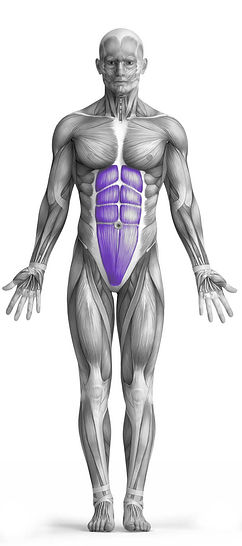Weighted Hanging Knee Raise 101 Video Tutorial
0

Exercise Synopsis
Target Muscle Group
Abs
Secondary Targets
Execution
Compound
Force Type
Pull
Required Equipment
Dumbbell
Fitness Level
Advanced
Variations
None
Alternatives
None
Timer
Hour
Minute
Second
Stopwatch
00:00:00:00
Overview
The Weighted Hanging Knee Raise is an effective exercise for targeting the abs, specifically the lower portion of the abdominal muscles, while also engaging the forearms for grip strength. To perform the exercise, hang from a pull-up bar or similar overhead apparatus, holding a dumbbell between your feet or knees. As you exhale, raise your knees toward your chest in a controlled manner, squeezing your abs at the top before slowly lowering your legs back to the starting position. The added weight increases the intensity, helping to build strength and muscle in the core while challenging the forearms to maintain grip throughout the movement.
How to Perform
Start by positioning a dumbbell at the base of a pull-up bar or any suitable bar you can hang from.
Stand facing away from the wall and place one foot on either side of the dumbbell to lift it off the ground.
Secure the dumbbell between your feet or knees, then grab the bar with both hands and hang, ensuring the dumbbell remains slightly above the floor.
Engage your core and begin raising your knees toward your chest, focusing on a slow and controlled movement.
At the top of the movement, pause briefly to squeeze your abs and feel the contraction.
Slowly lower your knees back to the starting position, maintaining control throughout the descent.
Keep the dumbbell from touching the floor at any point during the set to maintain constant tension on your abs and forearms.
Focus on your grip strength throughout the exercise, as the forearms are engaged to hold the dumbbell securely.
For added challenge, adjust the weight of the dumbbell based on your strength level.
★ Bonus: For exercises that involve external weights (such as dumbbells, barbells, or machines), the One Rep Max (1RM) calculator can help you estimate your maximum lifting capacity. Use it to track your strength progress and adjust your training for optimal results.
Tips
Consider using hooks or straps to reduce the strain on your forearms during the exercise.
Perform this movement slowly and with precise form, ensuring every part of the exercise is controlled.
Keep your upper body stable and avoid swinging or using momentum to complete the movement.
Focus on engaging your abs to lift the weight, rather than relying on any swinging motion.
Begin with a light weight to master your form. As your abdominal strength improves, gradually increase the weight for a greater challenge.
How Not to Perform
Avoid Using Momentum: Do not jerk or swing your body to lift your knees. Relying on momentum will reduce the effectiveness of the exercise and may lead to injury. Focus on slow, controlled movements to fully engage the abs.
Don’t Arch Your Back: Keep your spine neutral throughout the movement. Arching your back can strain your lower back and take focus away from the abs. Maintain a slight tuck in your pelvis to keep your core engaged.
Don’t Overuse Your Arms: While your forearms are involved in holding the bar, avoid relying on them too much. The focus should be on your core. Keep your grip firm, but let your abs do the work of lifting your knees.
Don’t Rush the Movement: Speeding through the exercise can cause you to lose control and form. Take your time on both the upward and downward motions to maximize muscle engagement and avoid injury.
Don’t Let the Dumbbell Touch the Floor: Allowing the dumbbell to touch the floor during the set takes away tension from the target muscles. Keep the dumbbell slightly above the ground at all times to maintain continuous engagement of your core.
Avoid Holding Your Breath: Breathing properly is key to maintaining control. Exhale as you raise your knees and inhale as you lower them. Holding your breath can cause unnecessary tension and affect your performance.
Don’t Use Too Much Weight Too Soon: Starting with too heavy a dumbbell can compromise your form. Begin with a manageable weight to ensure proper technique and gradually increase as your core strength improves.
Avoid Swinging Your Legs Too High: Lifting your knees too high can strain your hip flexors and lower back. Focus on raising your knees to a comfortable height, typically stopping just before your thighs reach parallel to the ground.
Variations
Variations of fitness exercises refer to different ways of performing a specific exercise or movement to target various muscle groups, intensities, or goals. These variations aim to challenge the body differently, prevent plateaus, and cater to individuals with varying fitness levels.
Alternatives
Alternative exercises in fitness refer to different movements or activities that target similar muscle groups or serve the same training purpose as the primary exercise. These alternative exercises can be used as substitutes when the original exercise is unavailable or challenging to perform due to various reasons such as equipment limitations, injuries, or personal preferences.








